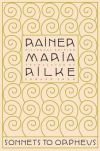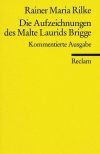
The Sonnets to Orpheus are a cycle of 55 sonnets written in 1922 by the Bohemian-Austrian poet Rainer Maria Rilke. It was first published the following year. Rilke, who is "widely recognized as one of the most lyrically intense German-language poets," wrote the cycle in a period of three weeks experiencing what he …

Named after the Castle of Duino on a rocky headland of the Adriatic, the "Duino Elegies" speak in a voice that is both intimate and majestic on the mysteries of human life and our attempt, in the words of the translator, "to use our self-consciousness to some advantage: to transcend, through art and the imagination, …

The Notebooks of Malte Laurids Brigge was Rainer Maria Rilke's only novel. It was written while Rilke lived in Paris, and was published in 1910. The novel is semi-autobiographical, and is written in an expressionistic style. The work was inspired by Sigbjørn Obstfelder's work A Priest's Diary and Jens Peter Jacobsen's …

In 1903, a student at a military academy sent some of his verses to a well-known Austrian poet, requesting an assessment of their value. The older artist, Rainer Maria Rilke (1875–1926), replied to the novice in this series of letters — an amazing archive of remarkable insights into the ideas behind Rilke's greatest …

 English
English Español
Español Deutsch
Deutsch



